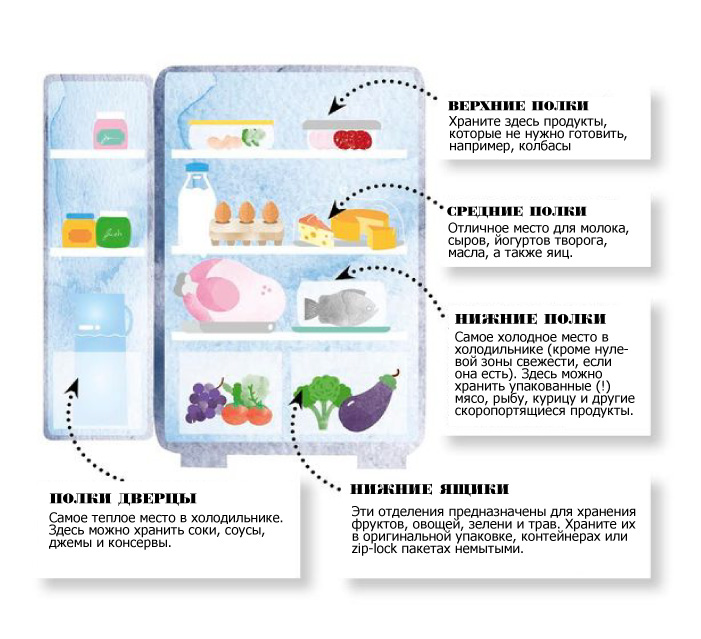12 tips to keep food fresh for longer and stop throwing it away
Nutritionists say the nutritional problem for many people is not that they don’t buy enough vegetables and fruits, but that they don’t have time to eat them before they go bad. According to statistics, 25-30% of the purchased products are thrown by us in the trash can. There are at least two explanations for this phenomenon:
- We buy too much food;
- It’s just that food spoils faster than it could..
What to do? Going to the store every day? Planning a weekly menu in advance? Hmm … It seems these principles are only suitable for the most disciplined. We will give you 12 simple tips on how to keep food fresh up to 2 times longer, stop throwing away “illiquid” and properly organize storage in the refrigerator.
12 nuances of storing food in the refrigerator
Tip 1. Store foods separately from each other and in packaging
When food is next to each other, their smells mix, and harmful bacteria can very quickly “move” on top of each other. If the food lies on the shelf without any protection, then it is quickly ventilated or dried, especially if the refrigerator operates on the No frost system without a specially provided freshness zone. Conclusion – you need to store products in separate containers and packages.
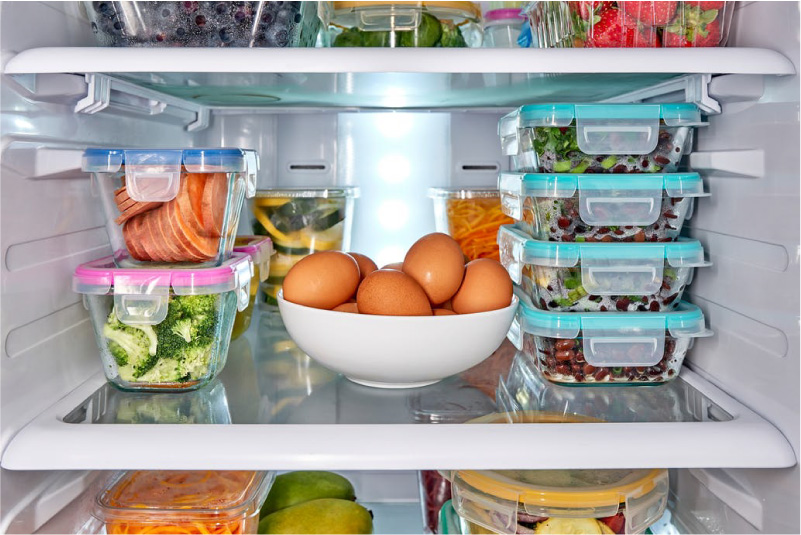
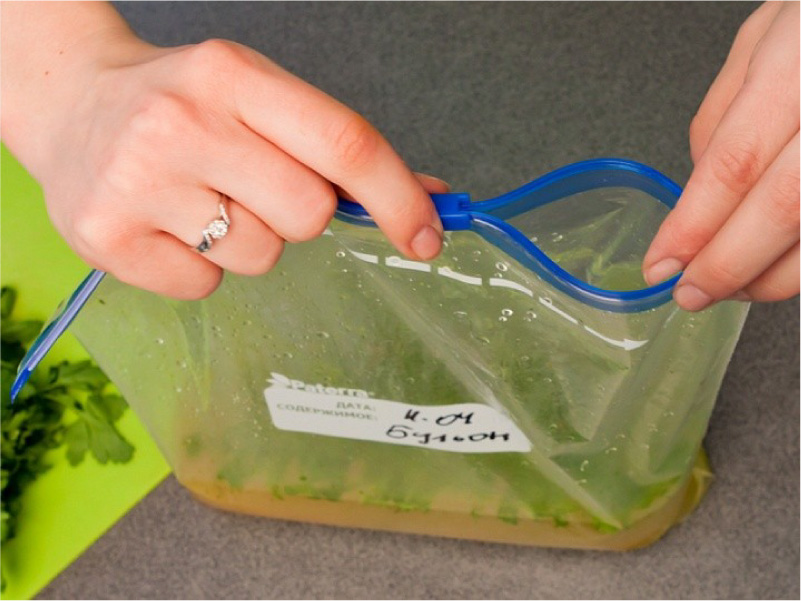
Special zip lock bags for freezing food with a label for signing the date and contents
The only thing that should not be stored in bags is sausages, meat, chicken, fish and cheese – they will suffocate in the film, acquire an unpleasant odor and begin to deteriorate faster. It is better to transfer them from the factory packaging to containers or wrap them in paper / foil.
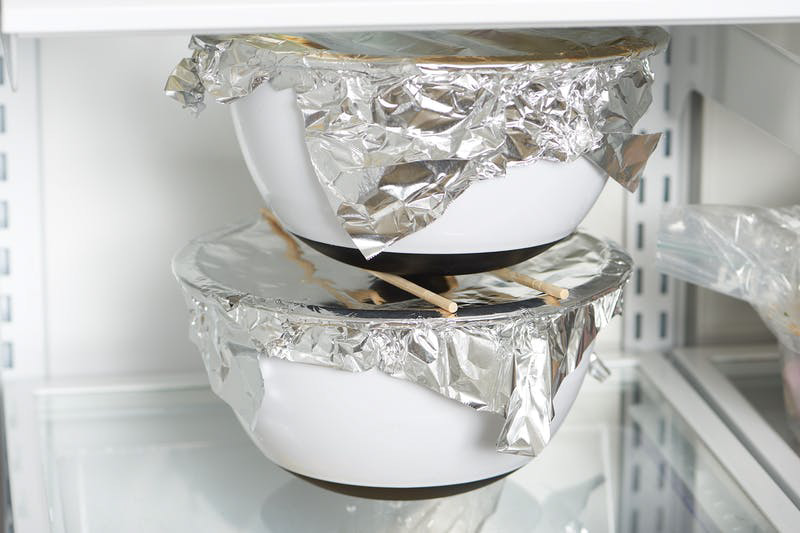
When there are not enough containers or zip-lock bags, ordinary plates and bowls come to the rescue, which only need to be covered with foil. To save space in the refrigerator, the dishes can be stacked on top of each other using Chinese chopsticks as a support.
Tip 2. Store herbs, vegetables and fruits with paper napkins
The main enemy of many vegetables, fruits and herbs is high humidity in the refrigerator. To extend the shelf life of fruits, store them with paper towels or in paper bags – the paper will absorb condensation. This is especially useful if your refrigerator does not have a dedicated freshness zone for fruits and vegetables..
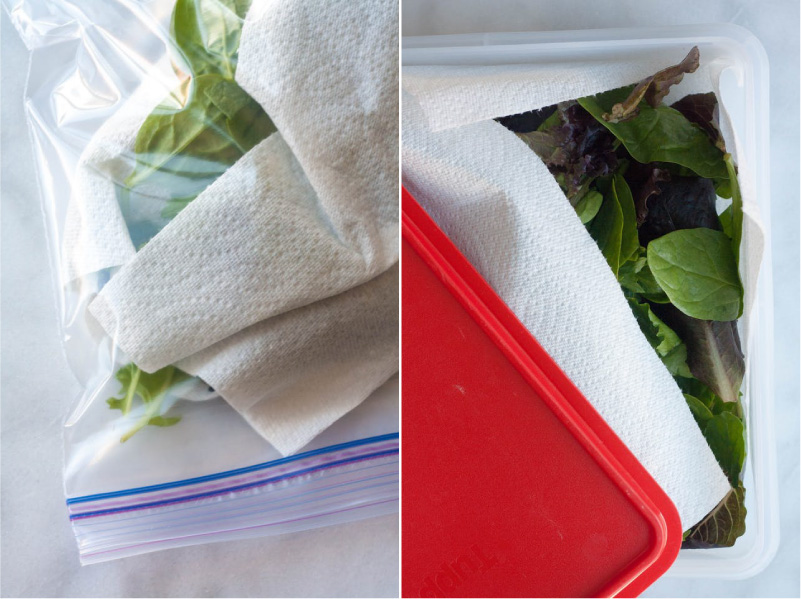
Tip 3. If you are about to buy a new refrigerator, choose a model with a dry and wet freshness zone
Fresh zones are drawers in which perishable food can be stored for several days longer than in a conventional refrigerator compartment. Due to the lower temperature and optimal humidity level, the growth of microorganisms and bacteria is slowed down, but the food does not freeze..
For example, refrigerators Bosch with technology VitaFresh plus keep food fresh up to 2 times longer. Just think of how many advantages such a timing advantage gives:
- You can leave food for at least a week and go to rest without throwing away food.
- Or imagine this situation – in the afternoon you decided to cook a new complex dish, bought ingredients, but by the evening the inspiration was gone. It’s okay – just put the food in the fresh zone and reschedule the experiment to another day..
- For those who do not have the opportunity to cook daily, the freshness zone will allow you to prepare soups, lunches and dinners for several days in advance. At the same time, you will not have to sacrifice the benefits and taste of dishes..
- Also, the VitaFresh plus technology will allow you to go to the store no more than once a week. During this time, fruits and vegetables, thanks to the natural level of humidity and the ability to regulate the access of dry air (we will talk about this option a little later), will not become watery and retain their vitamins. You can forget about meat with a smell, which usually appears after 2 days..
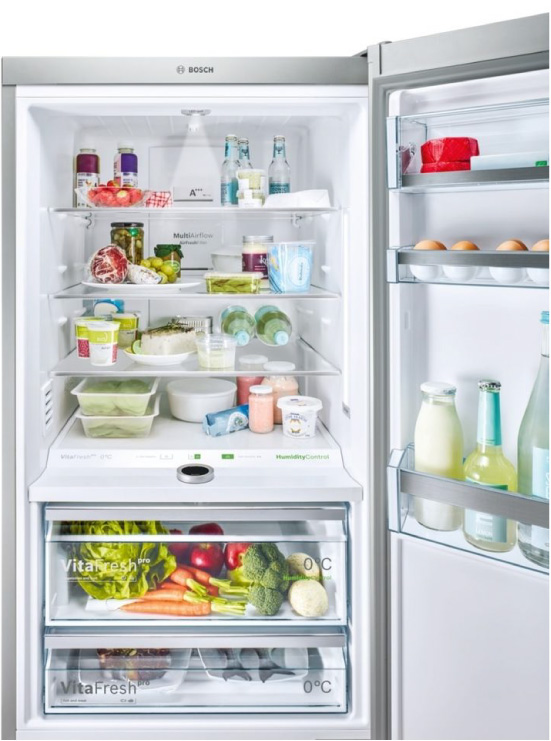
“Withered” salad, meats with a smell, tasteless vegetables and fruits – if there are fresh zones in your refrigerator, these problems will not arise for at least a week
The freshness area in the refrigerator may be wet and / or dry.
- The wet area is more suitable for storing fruits, vegetables and herbs..
- The dry zone maintains a temperature of about 0 degrees and is intended for meat, fish, poultry, and dairy products. If you wish, you can store uneaten dinners here and even chill drinks..
Tip 4. If your refrigerator has fresh zones with the ability to regulate the access of dry air … it’s time to learn how to use it
So, you already have a refrigerator with a freshness zone in which you can regulate the supply of dry air. But do you really know how to use it? Or did you just set an average in the hope of the best? Understanding moisture level settings will help you keep your fruits and vegetables for longer and in the best quality..
The principle of humidity setting is quite simple..
- A low moisture level is required for products that are insensitive to moisture loss. Typically, these are fruits and vegetables that emit ethylene gas, such as apples and pears. By opening access to dry air in the “fruit” box, we give ethylene the ability to self-remove. It helps prevent premature fruit spoilage..
- High humidity levels are needed primarily for storing leafy greens such as arugula, spinach, and herbs. When dry air is closed, moisture is trapped in the drawer and the greens are kept fresh and juicy. Fruits and vegetables sensitive to ethylene, such as strawberries, can be stored with herbs..
Here is a handy sign listing foods that prefer low or high humidity..
| Bananas (unripe) | Apples |
| Broccoli | Avocado |
| Brussels sprouts | Bananas (ripe) |
| Cabbage | Melon (torpedo) |
| Carrot | Fig |
| Cauliflower | Honey melons |
| Cucumbers | Kiwi |
| Eggplant | Mango |
| Green bean | Papaya |
| Herbs (cilantro, dill, parsley, thyme) | Pears |
| Leafy greens (kale, salads, spinach, Swiss chard, watercress) | Apricots, nectarines, peaches, plums, etc.. |
| Peas | |
| Pepper | |
| Strawberry | |
| Pumpkin, zucchini | |
| Watermelon |
Tip 5. Conduct a cursory inspection of the refrigerator at least 3 times a week
By regularly examining the contents of the refrigerator, you will be able to timely detect food that needs to be eaten as quickly as possible and prevent the appearance of “non-liquid”. This is especially true for those products that we are used to purchasing for future use or in several types. These can be yoghurts, sour cream, sauces, cottage cheese, cheeses, milk or canned food..
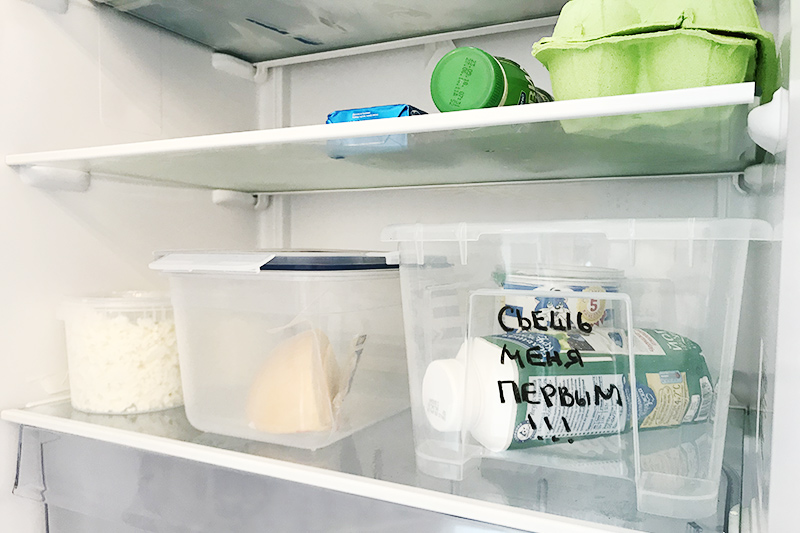
The idea of storing food with an expiration date
See also: Which refrigerator to choose: drip or no-frost?
Tip 6. If you go on vacation, fill the refrigerator at least half
This is because an empty refrigerator works less efficiently. If your appliance shelves are empty, you can fill them with water bottles..
Tip 7. If possible, keep fruits and vegetables separate
This will help to avoid mixing odors, and most importantly, will not allow the ethylene contained in many fruits to accelerate the deterioration of vegetables. Especially sensitive to this gas are potatoes, carrots, broccoli, asparagus and lettuce. And here is the list of leaders in ethylene production:
- Apples;
- Bananas;
- Pears;
- Peaches;
- Apricots;
- Kiwi;
- Mango.
Remember these fruits and never put them in the same drawer with vegetables and other ripe fruits..
Tip 8. If you need to extend the shelf life of bread and pastries, the refrigerator will help out
If you need to leave or you just bought too much bread, then extend its life as follows. Wrap the bread / baked goods in a paper bag or plastic bag with small holes, or in a natural cloth bag. If your refrigerator has a fresh area for fruit, place the wrapped bread there. If there is no such box, then the top shelf of the refrigerator will do. This will keep your bread and pastries alive for about 3 weeks. If necessary, flour products can be frozen for more than 1 month..
- To return the bread to a pleasant softness after long storage in the refrigerator (or after freezing), it can be heated in a closed container in a microwave oven.
Tip 9. If you find spoiled fruits and vegetables, throw them away immediately
Remember the saying about a rotten apple that “spoils all the fruits in the basket”? This is really true. When buying fruits and vegetables (especially in containers), inspect the fruits. And if you find dubious copies, throw them away quickly..
Tip 10. Whenever possible, buy products with an expiration date
When buying products, especially perishable ones, check their production, expiration and storage times. Often in supermarkets, the same products on the same shelf may have different release dates..
Tip 11. Arrange the products correctly
After returning from the supermarket with a week’s supply of groceries, many unload bags in a chaotic manner. As a result, spoiled or overdried snacks and food ingredients are found after a few days. All this happens because different temperatures are set in different zones of the refrigerator, and if the product gets into an unfavorable climate for it, then it begins to deteriorate faster or lose its taste. Therefore, we advise you to remember a few simple recommendations once and try to adhere to them in the future..
- The top shelves are one of the warmest places in the refrigerator. Good to store here: all sorts of leftovers, drinks and ready-to-eat foods (like butter, yogurt, cheese and gourmet food).
- Lower shelves – the lowest temperature is set here, so this zone is suitable for storing raw ingredients, that is, meat, fish, etc. (this advice is relevant if there is no special freshness zone in the refrigerator).
- The door is the warmest part of the refrigerator and, moreover, with an unstable temperature, so the habit of storing dairy products and eggs here should be abandoned. But sauces and ketchups, jams and pickles, soft and processed cheeses will feel quite normal on the door shelves..
Tip 12. Do not store bananas, tomatoes, and …
The secret to long-term storage of some foods is to keep them at room temperature. In addition to bananas and tomatoes, this list includes:
- Potatoes;
- Whole watermelons and melons;
- Whole garlic and onions;
- Chocolate;
- Coffee and tea.
These products become tasteless at low temperatures and spoil faster. You can also store apples and unripe hard fruits outside the refrigerator..

